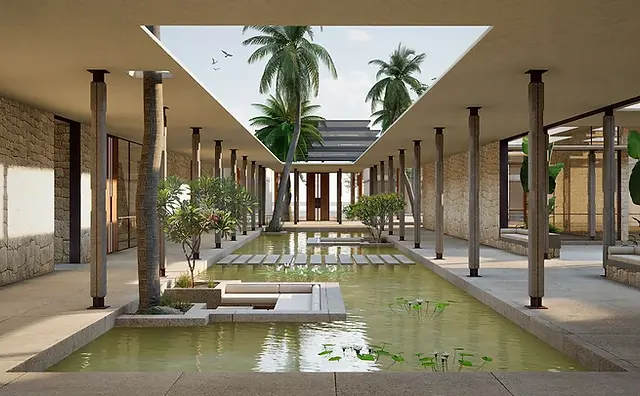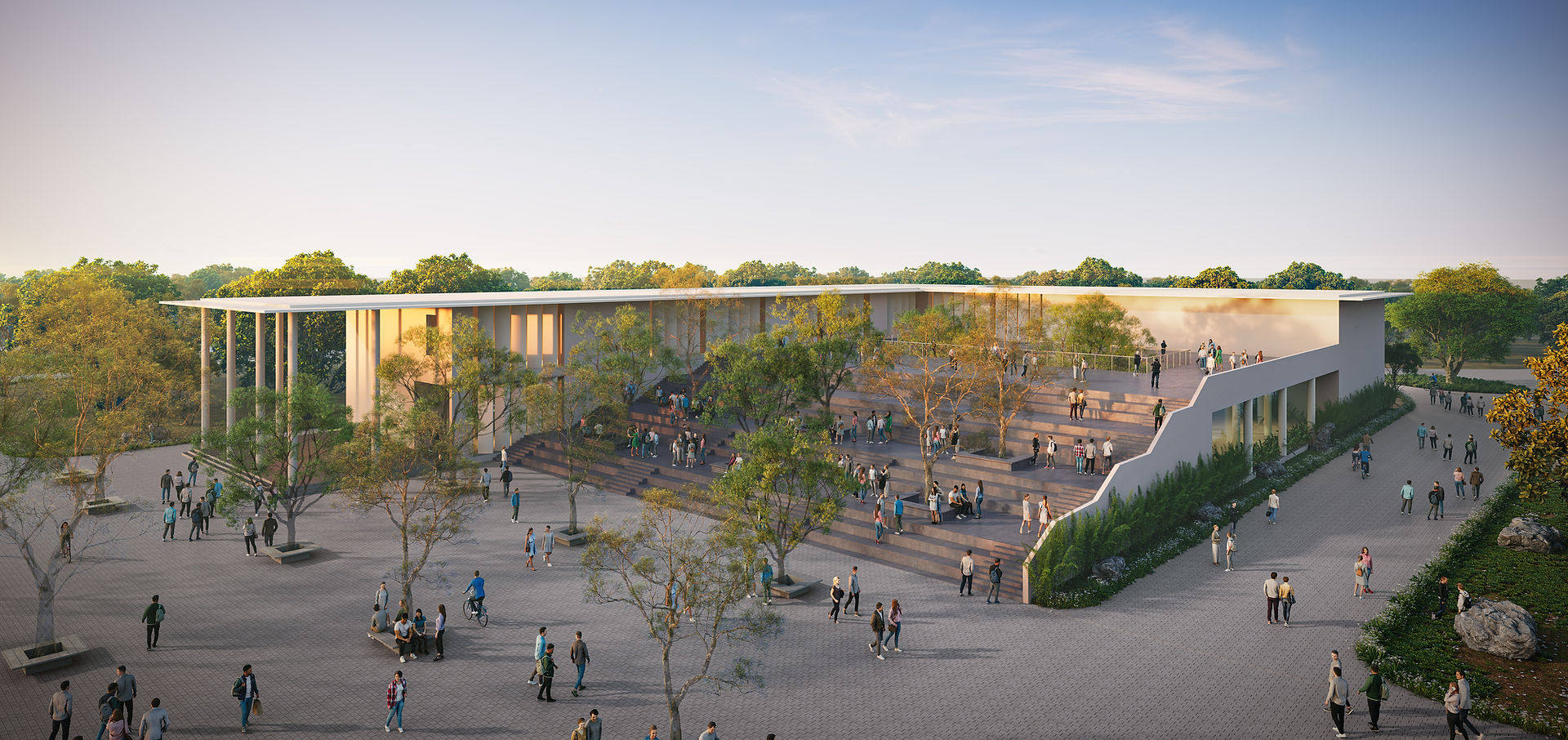The hospitality industry is undergoing a significant transformation, driven by evolving guest expectations, technological innovations, and sustainability goals. Hotels today are no longer just places to stay; they are immersive spaces that offer experiences, comfort, and a sense of identity. At the heart of this transformation are hotel design architects, professionals who merge creativity, functionality, and cultural influences to redefine modern hospitality. From eco-conscious designs to smart technology integration, architects are reshaping how hotels engage with guests and communities alike.
Sustainability as a Core Design Principle

One of the most prominent shifts in hotel design is the focus on sustainability. Guests today value eco-friendly accommodations, and hotel design architects are embracing green building practices to reduce environmental footprints.
- Energy Efficiency: Integration of solar panels, advanced HVAC systems, and natural ventilation reduces energy consumption.
- Sustainable Materials: Reclaimed wood, recycled metals, and low-VOC paints are becoming staples in design.
- Water Conservation: Greywater recycling, efficient plumbing systems, and rainwater harvesting are essential additions.
This trend reflects a growing awareness of climate change and ensures that hotels meet global environmental standards while aligning with the expectations of eco-conscious travelers.
Blending Local Culture into Hotel Identity
Modern travelers often seek authentic experiences, and hotels are responding by embedding cultural influences into their designs. Hotel design architects collaborate with local artisans, designers, and communities to reflect regional traditions in interiors and exteriors.
- Art and Décor: Hotels feature locally sourced art, textiles, and crafts that connect guests with the cultural narrative of the destination.
- Architecture and Layout: Incorporating traditional building styles or motifs into contemporary design creates a balance between heritage and modernity.
This cultural integration not only differentiates hotels but also strengthens ties with the local community, making each property unique.
Technology-Driven Guest Experiences

Technology has become a cornerstone of hotel functionality, and architects are creating spaces that seamlessly integrate digital convenience with hospitality.
- Smart Rooms: Voice-controlled lighting, climate systems, and entertainment features are increasingly common.
- Contactless Check-in/Check-out: Lobby designs now include digital kiosks and mobile access systems to enhance efficiency.
- Immersive Entertainment: High-tech amenities such as virtual reality lounges or AR-enabled décor are being adopted in upscale hotels.
By weaving technology into design, hotel design architects ensure that hotels remain competitive in an increasingly digital world while catering to tech-savvy guests.
Biophilic Design and Wellness-Centered Spaces
Post-pandemic, the demand for health and wellness in hospitality has surged. Guests value hotels that provide environments promoting relaxation, wellness, and rejuvenation.
- Biophilic Design: Incorporating natural light, indoor plants, water features, and open layouts creates a calming ambiance.
- Wellness Amenities: Yoga terraces, spa-inspired bathrooms, and meditation pods are increasingly integrated into designs.
- Healthy Materials: Use of non-toxic, sustainable materials ensures healthier indoor environments.
This focus enhances guest satisfaction while aligning with global health-conscious trends.
Multi-Functional and Flexible Spaces

The modern traveler is diverse, ranging from business professionals to digital nomads. To accommodate these varying needs, hotels are adopting flexible design solutions.
- Co-Working Spaces: Hybrid spaces blend social lounges with dedicated work zones, catering to remote workers.
- Event Versatility: Ballrooms, conference areas, and lounges are designed to be easily reconfigured for different functions.
- Adaptive Guest Rooms: Movable partitions and modular furniture allow customization based on guest preferences.
Flexibility ensures hotels remain adaptable, relevant, and efficient in catering to evolving guest demands.
The Rise of B#outique and Lifestyle Hotels
Guests increasingly prefer personalized and intimate experiences over standardized offerings. Hotel design architects are leading the boutique and lifestyle hotel movement by prioritizing uniqueness in design.
- Personalized Layouts: Each property reflects a distinct identity, often inspired by local heritage or artistic themes.
- Instagram-Worthy Design: Aesthetically striking interiors are crafted to appeal to modern travelers who value shareable experiences.
- Curated Experiences: Spaces are designed to enhance storytelling and immersion, making each stay memorable.
This approach appeals to millennial and Gen Z travelers who value authenticity and individuality.
Education Architecture Influences in Hospitality

Interestingly, the design principles used by education architecture firms are finding their way into hospitality projects. Schools and universities emphasize collaboration, flexibility, and inclusivity—concepts now being embraced by hotels.
- Collaborative Spaces: Hotels now feature community areas that encourage social interaction, much like student lounges.
- Flexible Layouts: Inspired by classroom adaptability, hotels are adopting spaces that can serve multiple purposes.
- Inclusivity in Design: Universal design principles ensure accessibility and inclusivity for all guests.
By borrowing from educational environments, hospitality spaces are becoming more open, adaptive, and community-focused.
Luxury Redefined: Minimalism Meets Elegance
Luxury in hospitality is no longer about opulence; it’s about refined simplicity and thoughtful experiences. Minimalist aesthetics, combined with smart design elements, are redefining luxury hotels.
- Minimalist Interiors: Clean lines, neutral palettes, and uncluttered spaces create elegance and serenity.
- Experiential Luxury: Guests value personalized services, curated experiences, and wellness over material extravagance.
- Eco-Luxury: Sustainable luxury materials like bamboo flooring and natural stone elevate both design and environmental responsibility.
This trend resonates with modern luxury travelers who prioritize mindfulness and subtle sophistication.
Outdoor Integration and Resort-Like Amenities
Hotels are increasingly blurring the line between indoor and outdoor environments. Architects are crafting resort-like atmospheres, even in urban settings.
- Rooftop Retreats: Rooftop pools, gardens, and lounges provide leisure and stunning city views.
- Outdoor Dining: Open-air restaurants and bars are designed with local landscapes in mind.
- Seamless Transitions: Sliding glass walls and open layouts create fluid movement between indoor and outdoor areas.
This integration enhances the overall guest experience by promoting relaxation and leisure.
The Future of Hospitality Design
The future of hotel design will continue to evolve around three pillars: sustainability, personalization, and technology. Hotel design architects are expected to expand their roles as not only designers but also as curators of guest experiences, cultural ambassadors, and sustainability champions. By drawing inspiration from other fields, including education architecture firms, the hospitality industry is preparing for a future that is more dynamic, inclusive, and human-centered.
Conclusion
The evolution of modern hospitality is being shaped by innovative trends led by hotel design architects. From integrating cultural elements to embracing eco-conscious materials, wellness-centered designs, and technology-driven experiences, architects are creating spaces that reflect the desires of today’s travelers. The infusion of ideas from other disciplines, such as those seen in education architecture firms, further enhances the adaptability and inclusivity of hotel spaces.
As hotels redefine themselves as experiential and sustainable hubs, the role of visionary firms becomes indispensable. Companies like SJK Architects are at the forefront of this transformation, seamlessly blending innovation, sustainability, and cultural sensitivity to craft spaces that resonate with both local communities and global travelers.


